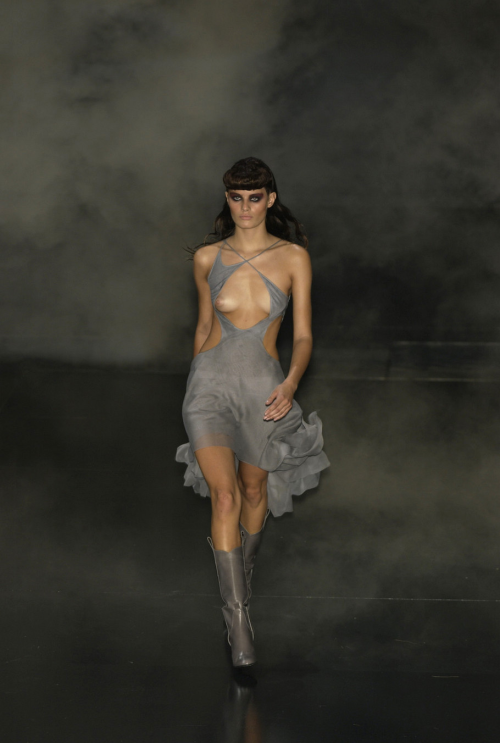‘Dance of the Twisted Bull’ was incredibly
different in some ways to McQueen’s previous work, and to understand why we
need to look at the events surrounding the time of its creation. Seemingly
impressed by his S/S 2001 masterpiece ‘VOSS’, the legendary Gucci group decided
to buy a share of McQueen as a company which presented enormous opportunities
regarding both funding and expansion – an opportunity which McQueen graciously
accepted. This acquisition took place in December 2000 when the designer would
have been midway through the creation of his A/W 2001 collection – essentially making
this, his S/S 2002 collection (which can be seen in full here) the first that
he made under the provisions of the Gucci group.
This could be one of the reasons that the
collection is one of the designer’s most widely-disregarded, and it ushered us
into a new era of McQueen’s timeline; one which seemed to be more
commercially-driven and, by consequence, less critically-acclaimed. The
increase in budget was clear from the gargantuan video backdrop and the
tumbling fountains of smoke that marred the runway, but the collection
therefore lacked a lot of the D.I.Y charm that McQueen was renowned for. Like
the designer himself, the signature aesthetic
had been bronzed, scrubbed and polished resulting in a series of collections
that lacked the rough edges which had previously made him the beloved underdog of the fashion industry.
However, a bad collection for McQueen is still a
great collection by most standards; as usual the theme was strong, a commentary
on the Spanish tradition of bullfighting represented by women in fiery red
flamenco dresses and romantically ruffled gypsy blouses. One woman walked the
runway with two arrows seemingly penetrating her torso, the fabric of her
tiered dress caught on the spikes of the spears that protruded from her spine –
a reference to McQueen’s dark sense of humour as well as the danger of the
sport.
The scarlet hues used throughout were also
steeped in symbolism; they seemed to represent both danger and lust, two themes
which are prominent in Spanish culture. Cut-out detailing on dresses left
nipples exposed but on the whole the collection was much safer than we, as an
audience, had come to expect from McQueen. The work in the dresses was
exquisite and some of the results were undeniably beautiful but it’s hard not
to feel a little short-changed by this collection – for a man of such
innovation to suddenly have to meet sales targets and be commercially-viable
seems a shame, and this collection appeared to represent McQueen trying to find
his feet in his new role as a ‘brand’ as opposed to a designer.



No comments:
Post a Comment